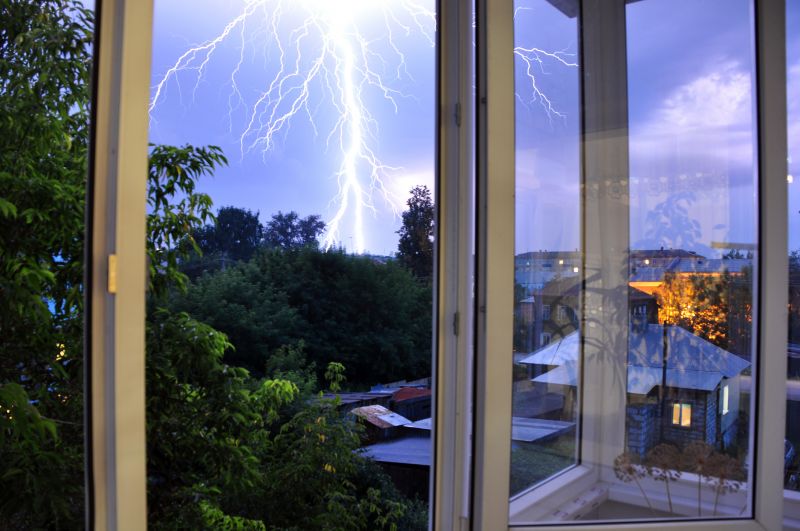Ultimate Collection Of Storm Restoration Products For Emergency Repairs
Get access to a comprehensive selection of supplies designed to handle urgent storm damage situations effectively.
 Storm restorations in Fishers, Indiana, often require a comprehensive approach to ensure safety and structural integrity. When dealing with storm damage, it is essential to have access to a variety of reliable products designed to address different aspects of restoration. From temporary protection solutions to long-term repair materials, the right tools and supplies can make a significant difference in managing storm-related challenges. Proper planning and selection of appropriate products can help homeowners and contractors restore properties efficiently and effectively.
Storm restorations in Fishers, Indiana, often require a comprehensive approach to ensure safety and structural integrity. When dealing with storm damage, it is essential to have access to a variety of reliable products designed to address different aspects of restoration. From temporary protection solutions to long-term repair materials, the right tools and supplies can make a significant difference in managing storm-related challenges. Proper planning and selection of appropriate products can help homeowners and contractors restore properties efficiently and effectively.
Top Overall Option
Heavy-Duty Weatherproof Tarp
A durable, multi-purpose weatherproof tarp serves as an essential protective barrier during storm damage scenarios. Its heavy-duty construction resists tearing and punctures, providing reliable coverage for damaged roofs, windows, or outdoor structures. Easy to deploy and remove, this tarp can help prevent further water intrusion and protect property until permanent repairs can be made.
Types of Products For Storm Restorations
Roofing Repair Materials
Includes shingles, flashing, and sealants designed to repair or replace damaged roofing components.
Temporary Protective Coverings
Tarping and weather-resistant sheeting used to cover exposed areas and prevent water damage.
Structural Sealants and Adhesives
Specialized compounds for sealing cracks, leaks, and joints in various building materials.
Siding and Exterior Panel Replacement
Materials for replacing damaged siding or exterior wall panels to restore building exterior.
Insulation and Weather Barriers
Insulation panels and barriers that help improve energy efficiency and moisture resistance.
Gutter and Drainage Solutions
Replacement gutters, downspouts, and drainage systems to manage water runoff effectively.
Debris Removal Tools
Shovels, rakes, and debris bags for clearing storm debris safely and efficiently.
Safety Equipment
Helmets, gloves, goggles, and harnesses to ensure safety during restoration work.
Water Extraction and Drying Equipment
Industrial-grade pumps and dehumidifiers to remove water and dry affected areas.
Paints and Coatings
Protective paints and coatings to seal and reinforce repaired surfaces.
Foundation Repair Products
Piers, anchors, and crack fillers designed to stabilize and repair foundation damage.
Window and Door Replacement Parts
Replacement frames, glass, and hardware to restore security and insulation.
Popular Choices
Widely used for quick coverage of damaged areas, providing temporary protection against the elements.
Commonly selected for sealing leaks and cracks in roofing materials during emergency repairs.
Popular for removing water from flooded areas to prevent further damage and mold growth.
Frequently chosen to improve drainage and prevent water intrusion after storm damage.
Trusted for bonding and reinforcing damaged structural components.
Essential for protecting workers during storm restoration activities.
Popular for replacing damaged siding and restoring the exterior appearance.
Often used for restoring thermal barriers in damaged walls and attics.
Commonly selected for sealing foundation and wall cracks to prevent water infiltration.
Popular for sealing and protecting repaired surfaces from future damage.
Frequently used to stabilize and repair compromised foundations.
Commonly chosen for restoring security and insulation after storm damage.
In the aftermath of severe weather events, quick response is crucial. Protective coverings such as tarps and weather-resistant sheeting are often the first line of defense against further damage caused by rain or wind. Structural repair products like sealants, adhesives, and patching compounds are vital for addressing leaks and cracks. For larger repairs, materials such as roofing panels, siding replacements, and insulation are commonly used to restore the property's integrity. Additionally, safety equipment and cleaning supplies are important to manage debris and ensure safe working conditions during the restoration process.
Choosing the right products for storm restoration involves considering durability, ease of application, and compatibility with existing building materials. It is also beneficial to select products that are versatile enough to handle a range of repair scenarios. Properly selected tools and materials can help minimize future vulnerabilities and extend the lifespan of the repairs. Whether working on residential or commercial properties, having a well-stocked inventory of storm restoration products can streamline the recovery process and reduce downtime after a storm event.
Key Buying Considerations
- Assess the extent of storm damage to determine the appropriate products needed.
- Choose materials that are compatible with existing structures and surfaces.
- Prioritize durability and weather resistance to ensure long-lasting repairs.
- Consider ease of application, especially for DIY projects or quick repairs.
- Evaluate the safety features of equipment and protective gear.
- Select products with clear instructions and reliable manufacturer support.
- Determine if temporary or permanent solutions are required based on damage severity.
- Check for compliance with local building codes and standards.
- Estimate the amount of materials needed to avoid shortages or excess.
- Review product reviews and ratings to gauge performance and satisfaction.
- Consider the environmental conditions of your location, such as humidity and temperature extremes.
- Factor in the availability of replacement parts and ongoing maintenance needs.
- Ensure access to proper tools and safety equipment for installation and repair.
- Plan for potential water damage mitigation with appropriate drying and extraction tools.
- Evaluate the cost-effectiveness of products relative to the scope of restoration work.
